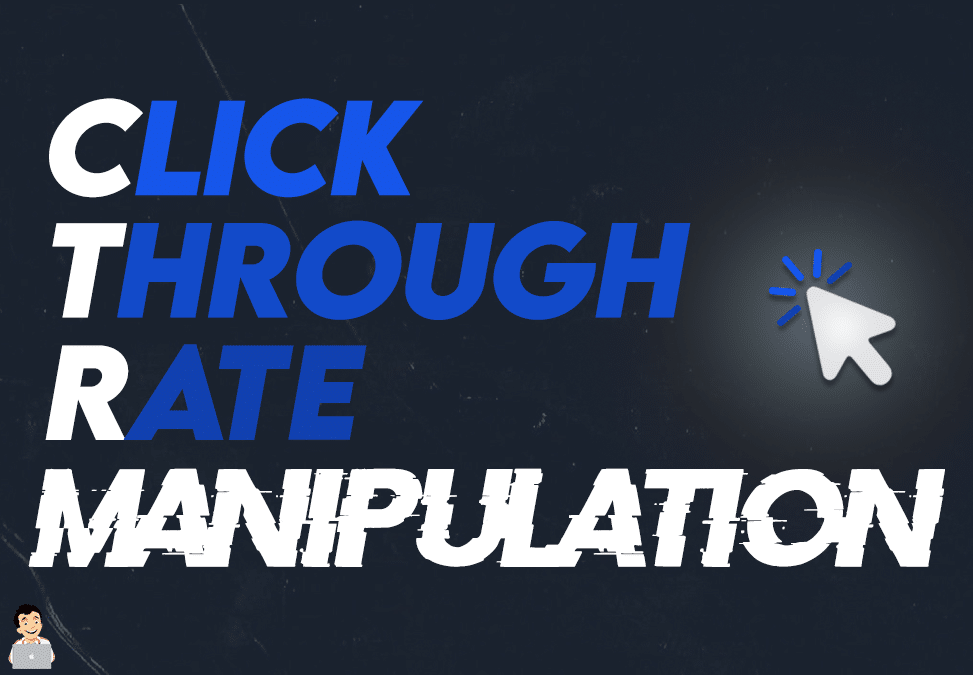CTR Adjustment: A Video Game Changer for Digital Campaigns
The increase of CTR control has undeniably changed electronic advertising techniques, offering marketers with tools to improve interaction and drive traffic properly. What effects might this stabilizing act hold for the future of electronic campaigns?
Recognizing CTR Adjustment
Although click-through price (CTR) adjustment might appear like a simple technique in electronic advertising and marketing, it incorporates a variety of strategies focused on artificially pumping up interaction metrics. This adjustment can take numerous kinds, including using click farms, crawlers, or deceitful advertisement positionings that deceive consumers right into clicking. These techniques can compromise the stability of performance data, making it testing for marketers to determine the genuine performance of their projects.
In addition, CTR manipulation elevates ethical concerns, as it undermines the openness of digital marketing. The reliance on inflated metrics can bring about illinformed advertising decisions, skewing resource allowance and project techniques. Organizations may invest heavily in networks and techniques that appear successful yet do not yield actual interaction or conversions.

Advantages of Click-Through Price Optimization
Enhancing click-through rate (CTR) is vital for boosting the performance of electronic marketing projects. A higher CTR shows that a bigger proportion of individuals are engaging with the content, which can lead to enhanced site web traffic and far better conversion rates. By boosting CTR, brand names can effectively assign their advertising and marketing sources to efforts that yield the highest possible returns.
One of the main advantages of CTR optimization is the possibility for improved ad placement and reduced costs - CTR Manipulation. Systems like Google Ads award higher CTRs with far better advertisement positioning and decreased cost-per-click (CPC), permitting marketing experts to stretch their spending plans even more. Additionally, a well-optimized CTR can boost brand name presence, as greater interaction rates often correlate with boosted natural reach

Techniques for Effective CTR Adjustment
To effectively adjust click-through prices (CTR), marketing experts can employ a selection of strategic methods that boost user engagement and drive straight from the source website traffic. One fundamental approach is maximizing advertisement copy to develop compelling and action-oriented language. CTR Manipulation. Utilizing solid call-to-action (CTA) phrases urges customers to take instant action, boosting the probability of clicks
One more reliable method is A/B testing, which enables online marketers to contrast different advertisement variations. By systematically assessing efficiency metrics, they can identify which aspects resonate finest with the target market, consequently refining their approaches for optimal effect. Additionally, leveraging visually appealing graphics and succinct messaging can catch attention quickly, making it a lot more likely that users will engage.

Last but not least, optimizing landing pages to ensure a seamless customer experience can decrease bounce rates and encourage additional communication, ultimately cultivating higher CTR. By incorporating these techniques, marketing experts can efficiently adjust CTR to accomplish their campaign goals.
Gauging Success in Digital Projects
Determining success in digital projects requires a clear understanding of vital efficiency indicators (KPIs) that align with campaign objectives. KPIs act as quantifiable metrics that assist analyze the efficiency of different strategies used throughout the campaign. Usual KPIs include click-through prices (CTR), conversion rates, cost per acquisition (CERTIFIED PUBLIC ACCOUNTANT), and roi (ROI)
To properly gauge success, it is vital to establish particular, measurable goals initially of the project. If the primary purpose is to increase brand understanding, metrics such as impressions and engagement rates may be focused on. On the other hand, campaigns concentrated on straight sales would certainly benefit from a much more comprehensive evaluation of conversion rates and earnings created.
Routine analysis of these KPIs enables marketing professionals to make data-driven decisions, maximizing their approaches in real-time. Utilizing analytical devices can help in monitoring efficiency and recognizing Continue trends, permitting swift modifications to boost campaign end results. Inevitably, a thorough approach to gauging success not only highlights locations for enhancement yet likewise strengthens the total performance of electronic advertising and marketing initiatives, driving sustained development and involvement in the long-term.
Future Fads in Digital Advertising And Marketing
Expecting the future of electronic advertising discloses a landscape shaped by rapid technical innovations and altering consumer habits. As synthetic knowledge and machine discovering remain to develop, marketing experts will significantly utilize these modern technologies to customize projects at an unprecedented scale. Anticipating analytics will certainly enable brand names to expect consumer demands, maximizing advertisement placements and content delivery in genuine time.
In addition, the increase of voice search and smart devices is transforming just how customers engage with digital content. Marketing experts will need to adapt their methods to make sure visibility throughout multiple systems, consisting of voice-activated assistants. This change necessitates an emphasis on conversational advertising and marketing, emphasizing engagement through dialogue as opposed to conventional promotional tactics.
Additionally, personal privacy concerns are triggering modifications in data collection techniques. Openness and honest data usage will certainly end up being vital, driving brands to cultivate count on and commitment among customers. The recurring advancement of social media platforms will likewise affect marketing methods, with an enhanced emphasis on credibility and user-generated web use this link content.
Final Thought
In summary, CTR adjustment represents a substantial improvement in digital marketing strategies, offering instant benefits via boosted involvement metrics. Nevertheless, the honest considerations bordering such methods necessitate a mindful technique to guarantee lasting brand name integrity and genuine target market connection. By striking a balance in between optimization techniques and genuine interaction, marketing professionals can cultivate sustainable relationships with customers. The ongoing development of electronic advertising will certainly depend on this fragile interaction, forming the future landscape of brand-consumer interactions.